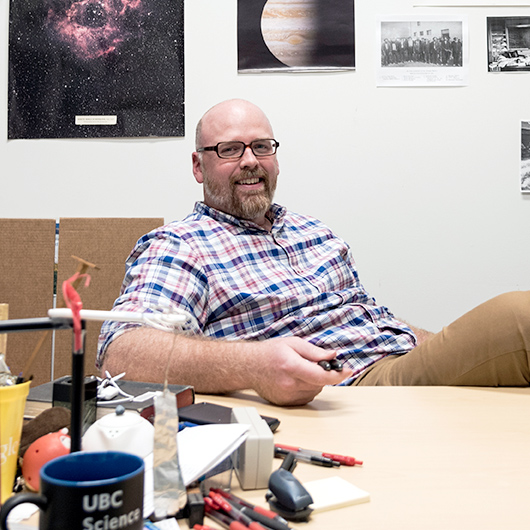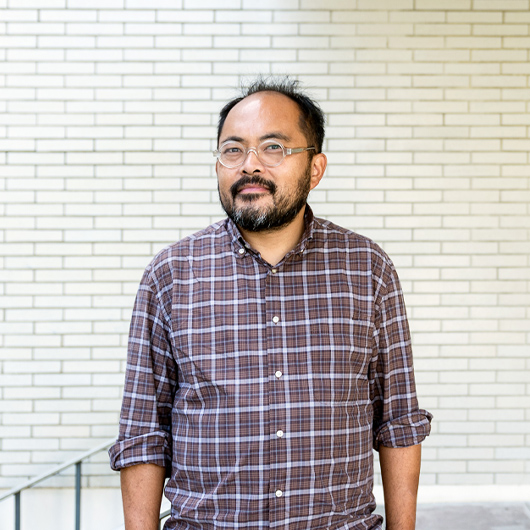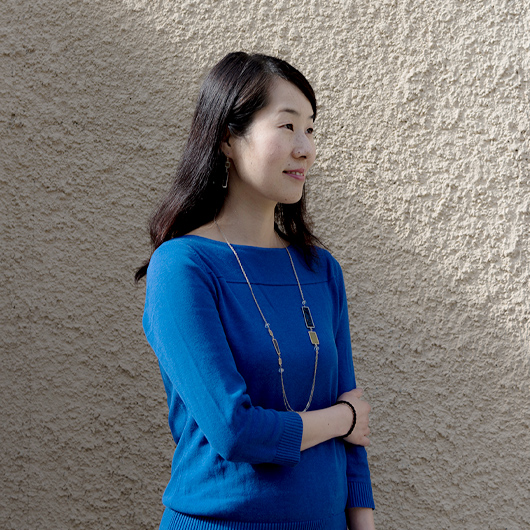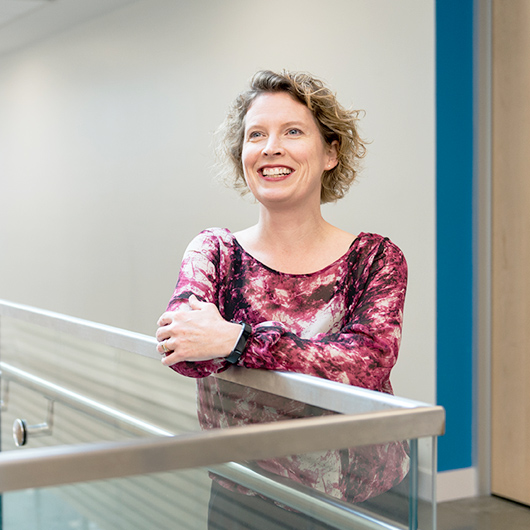
An interview with
Misuzu Kazama
Misuzu Kazama, lecturer of Japanese language at the Department of Asian Studies, developed a peer review project for her students taking Japanese 201. The project aimed to find out to what extent language students could provide feedback to each other on their speaking. With the support of the Scholarship of Teaching and Learning (SoTL) Seed Fund, Misuzu Kazama created an assignment where students reviewed each other’s oral skills, through the example of a job interview.
What is the project about?
The project is peer feedback of all our proficiency interviews, using the context of a job interview in Japanese.
A job interview itself is already challenging for people in general, and preparing for the job interview in a foreign language is very challenging. The project focused on how to prepare for the job interview using peer feedback.
Could you give us more background information about your course and students?
The course is Japanese 201: a beginner-level, second-year course. The language proficiency that they can do is, they can talk about some general topics, and they can do a presentation on something, but not really any very detailed things. They cannot really explain yet at their proficiency level.
[Additionally] for them the honorific language which is required for Japanese interview, was very challenging, in that they had newly learned the honorific and humble language that’s incorrect keigo. Even as a native speaker of Japanese, we learn keigo like learning a foreign language. That’s difficult for native speakers, but also difficult for the Japanese learner, of course. So they are using a newly learned language, the expressions, and they challenge it at the job interview.
Students first looked at a model interview that we prepared in advance. We used an example video of a “good model” of a job interview and a “so-so model” of an interview. The students get to compare the two sample videos, practice how to give feedback, and see what the expectations of this oral interview is, using the rubric that they’re eventually going to be graded with.
Using the rubric, they practiced where to look, the language use, the attitude and the content. They practiced in the classroom by looking at the video and evaluating those samples, then they were ready to give feedback to their peers.
Students then self-recorded their job interview practice video. In the video, they asked interview questions by themselves and answered the questions. We arranged at least three peers in one group, so that one person receives feedback from at least two peers. Students were grouped with peers who applied for the same or similar job positions or same company, so that they kind of know the vocabulary and what to answer or how to answer the type of questions.
After receiving feedback, they had time to practice, reflect on the comments, refine their interview and prepare for the actual interview with the instructor — that is the summative interview with me, the instructor.
What motivated you to initiate student peer assessment?
There is so much research done and it’s very common to use peer feedback for writing, but not for speaking. Speaking requires intonation and hearing whether the intonation is accurate or correct, if pronunciation is okay, [and if grammar and word choice are correct].
Language use is difficult to give feedback on as a non-native speaker, so that’s why as a language instructor, it’s difficult to believe if a student can do it or not. Using peer feedback on speaking is not very commonly used. But I wanted to find out to what extent language students can provide feedback to each other on their speaking.
The form of a job interview, we normally do peer feedback sometimes. You get feedback from a colleague and that is very helpful. I thought that I can apply this to the students’ language practice, and so by receiving peer feedback, they can improve and then prepare for the actual interview with the instructor.
Continue reading ▼
How did you do it? Did you have the support you needed for the project?
With the support from an educational consultant from CTLT, I received the Scholarship of Teaching and Learning (SoTL) Seed fund.
We redesigned the peer assessment component of the job interview project. We discussed how to prepare students on peer assessment, and [the educational consultant] also helped me integrate the Collaborative Learning Annotation System (CLAS) for peer assessment. It is a web-based tool where you can upload or record a video and leave comments on the timeline of the video. So this technology allowed students to provide specific feedback to peer interview videos outside of class time.
Please describe some of the key outcomes of the project.
Students learned the keigo, its very formal expressions, especially [how to use it] … such as in a job interview context or in a company. The place they would use keigo has to be somewhere after they graduate, and they start working at a company.
So to practice keigo, to use keigo in an authentic context, that’s why I provided the context of a job interview — and also with the hope that they can really use the keigo and the skills they acquired from this course in their actual life later. After they graduate, some students might want to find a job in Japan, or they might want to find a job that requires Japanese language. [I want them] to be able to use what they have learned in real life, in the future.
We found that students have the ability to evaluate their language use. Normally, teachers and students think it’s impossible for [language learners] to give correct feedback on language use, grammar use and correct pronunciation, since they are not native speakers.
Although there was a negative perception from students and instructors towards peer feedback on language use, we found that [students] can actually give sufficient and correct feedback to their peers. Most of the feedback they gave was accurate. They were suggesting a word choice that was much better than what the other candidate made. We found that the students are actually giving good feedback and learning from each other.
How did the project impact learners or the way in which you teach?
I think that the students got more confidence from their peers. They can support each other and they have also learned by looking at other examples. They can get an idea of where and what to improve for their interview by looking at each other.
What are the future plans for this work? How do you plan on sustaining what you have created through the project?
I will keep using peer assessment for the job interview assignment. Students can give sufficient and correct feedback to their peers’ verbal language. CLAS, the web-based video annotation system, was also a good addition to the project.
The one thing that I will do differently is that I will have more peers to review so that each student can have enough feedback from multiple peers.
How UBC faculty have incorporated Student Peer Assessment

Silvia Bartolic
Silvia introduced SPA as a way of sharing her sociology students’ work with their peers. She explains the challenges and learnings she found along the way.

James Charbonneau
Initially a community-building exercise, James explains how peer evaluation in his physics class evolved into student peer review platform ComPAIR, and the importance of safety in peer assessment.

Kevin Chong
One of the foundational pieces of creative writing is peer review. Traditionally run in small workshops, Kevin shares how he brought peer review across to large lecture classes and its importance to developing writers.

Peter Graf
Personalized feedback for student learning can be challenging to deliver in large classes. But beyond that, Peter sees peer assessment as an opportunity for students to develop important critical reading and self-assessment skills.

Misuzu Kazama
It’s far more common for peer review to be applied to writing tasks than spoken ones. Can language students give each other good feedback on a spoken assessment? Misuzu developed a project with real-world context to find out.

Kelly Allison & Marie Nightbird
Interpersonal communication is a key skill for social work students. After using informal peer feedback to develop those skills for many years, Kelly and Marie share how they formalized the process to gather insights and improve the student experience.

Jennifer Walsh Marr
From a starting point of investigating accountability in group work, Jennifer’s peer assessment project led to more student-centred teaching, and a better sense of community for her students.
